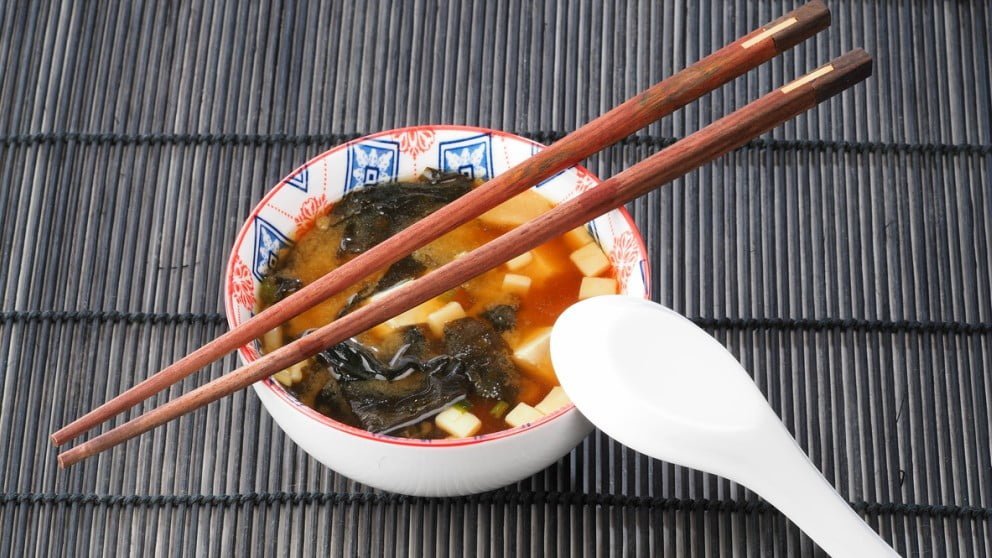Japanese cuisine is renowned for its delicate and balanced flavours, and at the heart of these flavours lies an essential ingredient called Japanese dashi.
Dashi is a fundamental component in many traditional Japanese dishes, providing a rich and savoury foundation that enhances the overall taste experience.
In this article, we will dive deep into the world of Japanese dashi, exploring its origins, different types, preparation methods, and its versatility in culinary applications. So, let’s embark on this umami-filled journey and uncover the secrets of Japanese dashi.
Japanese Dashi: The Essence of Umami
Dashi, a vital ingredient in Japanese cuisine, holds the key to unlocking the fifth taste sensation, umami. Umami, often described as a savoury and mouthwatering flavour, adds depth and complexity to dishes. Japanese dashi acts as a flavour enhancer, elevating the taste of a wide variety of culinary creations. By understanding the intricacies of dashi, you can master the art of umami and take your dishes to new heights.
What is Dashi?
Dashi is a traditional Japanese soup stock or broth that forms the foundation of numerous dishes. It is made by extracting flavours from various ingredients, such as kombu (dried kelp), katsuobushi (dried and smoked skipjack tuna flakes), dried shiitake mushrooms, and niboshi (dried small fish). These ingredients infuse the liquid with their distinct flavors, resulting in a savory and aromatic base.
Types of Dashi
Dashi comes in different variations, each lending its unique taste profile to dishes. Let’s explore the most commonly used types of dashi:
1. Awase Dashi
Awase dashi is a versatile and widely used dashi that combines kombu and katsuobushi. The kombu imparts a delicate and slightly sweet flavour, while the katsuobushi contributes a smoky and robust taste. This combination creates a well-balanced and umami-rich stock, making it a popular choice in many Japanese recipes.
2. Kombu Dashi
Kombu dashi is a vegetarian-friendly dashi made solely from kombu, a type of dried kelp. Kombu is rich in natural glutamates, which are responsible for the umami taste. This dashi has a subtle and milder flavour compared to others, making it suitable for delicate dishes where a lighter taste is desired.
3. Katsuo Dashi
Katsuo dashi, also known as bonito dashi, is made from katsuobushi, dried and smoked skipjack tuna flakes. This dashi has a distinct smoky aroma and imparts a strong umami flavour to dishes. Katsuo dashi is commonly used in hearty soups, stews, and noodle dishes, adding depth and complexity to the final outcome.
4. Shiitake Dashi
Shiitake dashi is created by soaking dried shiitake mushrooms in water, allowing the flavours to infuse into the liquid. This dashi has a rich and earthy taste, with a hint of natural sweetness from the mushrooms. Shiitake dashi is frequently employed in vegetarian and vegan recipes, providing a meaty and robust flavour without using animal-based ingredients.
5. Niboshi Dashi
Niboshi dashi is made from dried small fish, such as anchovies or sardines. The fish are simmered to extract their flavours, resulting in a dashi with a pronounced fishy aroma and intense umami taste. Niboshi dashi is commonly used in regional Japanese cuisines and is particularly well-suited for ramen broths and seafood dishes.
Preparing Dashi: The Traditional Way
Creating dashi requires careful attention to detail and the proper selection of ingredients. Let’s explore the traditional method of preparing dashi:
1. Ingredients for Basic Dashi
To make basic dashi, you will need the following ingredients:
- 20 grams of kombu (dried kelp)
- 30 grams of katsuobushi (dried and smoked skipjack tuna flakes)
- 1 litre of water
2. Making Basic Dashi
Here’s a step-by-step guide on preparing basic dashi:
- Wipe the kombu with a damp cloth to remove any dirt, but do not scrub it.
- Place the kombu in a large pot with the water and let it soak for about 30 minutes.
- Slowly heat the pot over medium-low heat until the water reaches just below boiling point (around 80°C or 176°F). Be careful not to let it boil, as this can release unwanted bitterness.
- Remove the kombu from the pot and increase the heat to bring the liquid to a boil.
- Once the liquid reaches a rolling boil, add the katsuobushi and immediately turn off the heat.
- Let the katsuobushi steep in the hot liquid for about 5 minutes, allowing the flavours to infuse.
- Strain the dashi through a fine-mesh sieve or cheesecloth to remove any solids.
3. Variations and Enhancements
While the basic dashi recipe forms the foundation, you can experiment with additional ingredients to create different flavours. Some variations include adding shiitake mushrooms, niboshi, or even a combination of ingredients to enhance the complexity and richness of the dashi. Feel free to explore and adapt the recipe according to your taste preferences.
Dashi: The Versatile Flavor Enhancer
Dashi’s versatility extends beyond being a simple broth or stock. Its unique umami flavour makes it an indispensable ingredient in various culinary applications. Let’s explore some of the ways dashi can elevate your dishes:
1. Soups and Broths
Dashi forms the backbone of many Japanese soups and broths, such as miso soup, udon soup, and suimono (clear soup). Its umami-rich profile adds depth and complexity, transforming a humble soup into a delightful culinary experience.
2. Sauces and Dips
Dashi serves as a fantastic base for creating flavorful sauces and dips. By reducing dashi and adding soy sauce, mirin (sweet rice wine), and other seasonings, you can craft delicious dipping sauces for tempura, gyoza, or grilled meats.
3. Noodle Dishes
Whether it’s soba, ramen, or somen, dashi plays a crucial role in enhancing the flavour of Japanese noodle dishes. The umami-packed dashi broth elevates the overall taste and provides a satisfying umami kick with every slurp.
4. Marinades and Dressings
Dashi can be incorporated into marinades and dressings to infuse dishes with its unique umami essence. Its savoury notes pair well with grilled meats, roasted vegetables, and salads, adding a savoury punch to your culinary creations.
5. Seasoning Ingredient
In addition to being a standalone broth, dashi can be used as a seasoning ingredient to enhance the flavours of various dishes. Adding a small amount of dashi to stir-fries, rice dishes, or even omelettes can elevate the taste and bring out the natural umami of the ingredients.
FAQs
Dashi is best consumed fresh, as its flavours diminish over time. If stored in an airtight container in the refrigerator, it can be kept for 2-3 days. However, for the best results, it’s recommended to prepare dashi as needed to ensure optimal taste.
Yes, you can make vegetarian dashi by using kombu or shiitake mushrooms as the main ingredients. Kombu dashi, in particular, is a popular choice for vegetarians, as it doesn’t require any animal-based ingredients while still offering a delicious umami flavour.
Dashi can be gluten-free, depending on the ingredients used. If you opt for pure kombu dashi or use gluten-free soy sauce as a seasoning, you can create a gluten-free dashi. However, it’s essential to check the labels of pre-packaged dashi products, as some may contain gluten or wheat-derived ingredients.
Yes, you can freeze dashi for future use. It’s advisable to freeze dashi in ice cube trays or in small portions, making it convenient to thaw and use as needed. Remember to label the containers with the date to ensure you use them within a reasonable timeframe.
If you don’t have access to dashi or its ingredients, you can use alternatives to mimic its umami flavour. Some options include using vegetable or chicken broth, adding a splash of soy sauce, or incorporating a small amount of miso paste to infuse depth and richness into your dishes.
Dashi ingredients, such as kombu, katsuobushi, and dried shiitake mushrooms, can be found in Asian grocery stores, speciality food stores, or ordered online from reputable retailers. Additionally, some pre-packaged dashi products are available for convenience, but be sure to check the ingredient list and choose high-quality brands.
Conclusion
Japanese dashi is a culinary gem that unlocks the secrets of umami, enriching dishes with its savoury and aromatic qualities.
Whether you’re preparing traditional Japanese recipes or seeking to add depth and complexity to your own creations, understanding dashi and its versatility is essential.
By harnessing the power of dashi, you can elevate your culinary skills and embark on a flavorful journey through the world of Japanese cuisine.





























